
Diaspore Gemstone: Properties, Meanings, Value & More
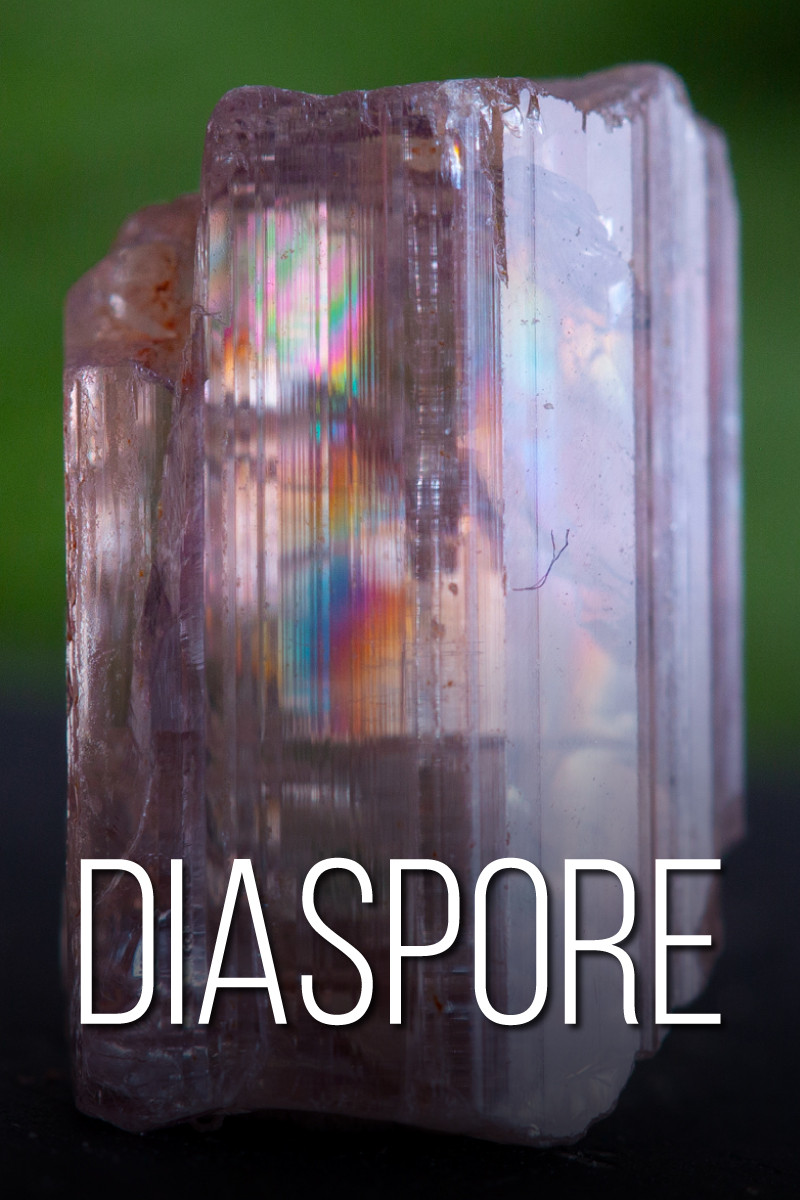 Diaspore is a clear aluminum hydroxide gemstone noted for its rare, color-changing Turkish variety. What color is diaspore? Most single-colored stones are colorless, pink, brown, or yellow.
Diaspore is a clear aluminum hydroxide gemstone noted for its rare, color-changing Turkish variety. What color is diaspore? Most single-colored stones are colorless, pink, brown, or yellow.
The diaspore mineral is abundant, but gem-quality diaspore is rare. Most color-changing gems are Turkish diaspore, but what is a Turkish diaspore?
Turkish diaspore is the highest-quality diaspore gem material on the market. Trade names for Turkey’s diaspore — Zultanite®, Ottomanite, and Csarite® — are exclusive to material from the southwest İlbir Mountains.
Intrigued? We’ll fill you in on all the details behind diaspore properties, varieties, healing powers, and more!

What Is A Diaspore Stone?
Diaspore is a fairly modern semi-precious gemstone. Ancient people knew of it, but gem-quality diaspore is a 20th-century find. Other names for the stone include empholite, kayserite, and tanatarite.
This crystal is a zodiac stone for Leo, Libra, and Pisces. All three signs have a knack for living in the moment and not taking themselves too seriously, matching diaspore’s symbolism in confidence and creativity.
Color-changing Zultanite® is a slightly more affordable alternative to alexandrite, the June birthstone. While both gems are pricey, Zultanite® is 5-20 percent of alexandrite’s cost.
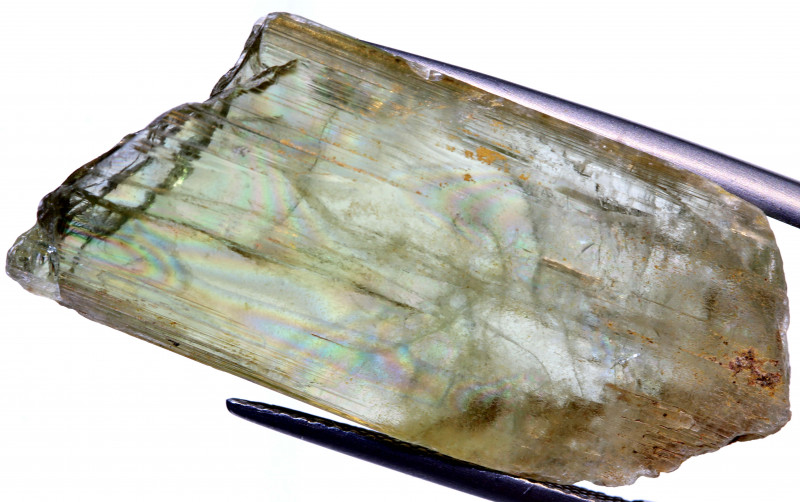
Diaspore Specifications & Characteristics
Diaspore is an aluminum oxide hydroxide. The diaspore formula is AlO(OH), but manganese, iron, or chromium may be present. Diaspore’s hardness on the Mohs scale is similar to tanzanite, at 6.5-7.
Outside of Turkish material, what does a diaspore gemstone look like? Most diaspore color-change stones are green in sunlight, yellow-green in fluorescent light, and reddish-pink in incandescent light. Some show multiple colors at once in the right lighting.
Here are the rest of diaspore’s mineral traits:
Color: Colorless, white, yellow, pink, red, lavender, brown, blue-green, green, pinkish-brown, gray, greenish-gray; Color-changing varieties shift in green, pink, and yellow shades.
Crystal structure: Orthorhombic
Luster: Vitreous (glass-like) or adamantine; Pearly on cleavage
Transparency: Translucent to transparent
Refractive index: 1.68-1.75
Density: 3.1-3.5
Cleavage: Perfect 1-direction on [010]; Good on [110]
Fracture: Conchoidal
Streak: White
Luminescence: Sometimes fluorescent; dull pale yellow or green in SW-UV
Optical Effects: Certain varieties are color-changing; Rarely chatoyant
Pleochroism: Present in some varieties; Strong in light green, violet-blue, and rose-red or deep red; Can be magenta, reddish-brown, green, and grayish-green.
Now, let’s break down the different diaspore varieties.
Types of Diaspore
There are a couple of varieties that aren’t color-changing:
Chrome Diaspore: Pale to dark purple variety with chromium
Mangan-diaspore: South African rose-red to dark red variety with manganese
Now let’s discuss the Turkish, color-changing varieties.
Color-Changing Diaspore
Turkish color-changing diaspore shows kiwi green, rich pinkish-red, and champagne hues under different lighting. Is Turkish diaspore rare? Yes. Turkey produces large rough specimens, but gem-quality diaspore is still rare.
Another nickname for Turkey’s diaspore is Turkizite. Trademarked names exclusive to their eponymous companies are Zultanite® and Csarite®. So, what is the difference between Zultanite® and diaspore? All Zultanite® is diaspore, but not all diaspore is Zultanite®. You can only legally call diaspore from Turkey Zultanite® or Csarite®.
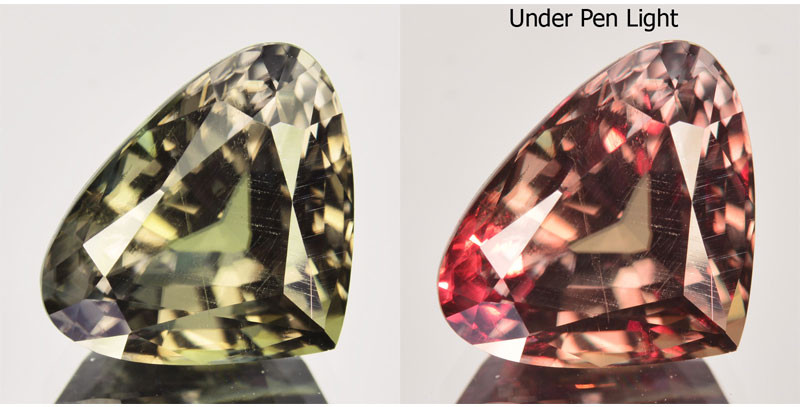
How Does Diaspore Change Color?
Diaspore’s color-changing happens through light absorption in the crystal lattice.
The visible spectrum of colors includes the colors of the rainbow, each occupying a wavelength. Generally, a gemstone’s color is the only wavelength it doesn’t absorb — e.g., blue gemstones absorb every wavelength but the blue wavelength.
However, different light sources emit different wavelengths. If the light is low in a certain wavelength, objects that don’t absorb that wavelength (i.e. are that color) look different under that lighting.
A “transmission window” is when a gemstone has low absorption of a wavelength (color). Color-changing gems have multiple transmission windows. So, if a light source emits more green wavelengths, the gem looks green; if a different light emits more red wavelengths, the gem looks red.
Let’s take a break from color science and look at diaspore’s spiritual side!
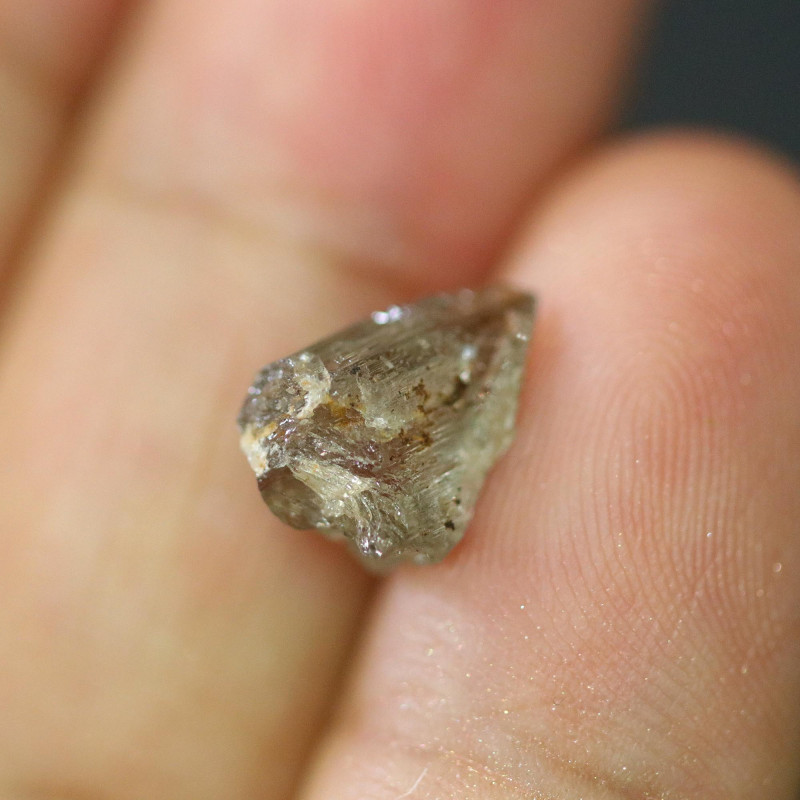
Diaspore Meaning & History
Much of the diaspore stone's meaning comes from its color-changing powers. The stone symbolizes transformation and adapting to life’s ebbs and flows.
In Turkish lore, ancient eastern philosophers wrote about the crystal, and Sultans allegedly wore diaspore rings or gifted them to their wives.
The first official diaspore discovery happened in 1801 in the Russian Urals, where locals had called it “glandular kyanite.”
French mineralogist, René Just Haüy, wrote the first official description and chose the name diaspore. It derives from the Greek diaspeirein, meaning “disperse,” and reflects how heat makes diaspore decrepitate (disintegrate with a crackling sound).
Gem-quality diaspore didn’t emerge until the 1970s when Turkish bauxite miners found a large, color-changing specimen with pinkish-brown to blue-green transitions.
While other mines have emerged, most of diaspore’s fascinating history revolves around Turkish diaspore and two business partners: American master gem cutter Stephen Kotlowski and Turkish jeweler Murat Akgun.
The Story of Zultanite & Csarite
Akgun and Kotlowski pioneered diaspore marketing, starting their company Golden Land Trading in the mid-1990s. In 1995, Kotlowski won the AGTA Spectrum “Cutting Edge” Award for faceting a fan-shaped, 26-carat diaspore.
By 2005, Akgun acquired the legal mining rights and financial backing to expand the company into Zultanite Gems LLC.
Akgun suggested a trade name that honored the Sultans of the Ottoman Empire to set their high-quality gems apart and boost marketing. They went back and forth, from “Ottominite” to “Sultanite” to eventually “Zultanite.”
Zultanite’s popularity rose, and the public gained a commercial supply of diaspore gems by 2007. Around 2011, Kotlowski faceted the world’s largest Zultanite® into a whopping 96-carat gem named “Sultan’s Shield.”
In 2012, British jeweler, Stephen Webster, incorporated the Sultan’s Shield into a luxury jewelry set. The set eventually sold for $1.5 million, two-thirds of which was for the Sultan’s Shield alone.
Unfortunately, an era of legal drama followed — ending in Akgun losing rights to the company, the “Zultanite” name, and all the diaspore inventory. Having to start from scratch, Akgun created a new trade name: Csarite. Eventually, both sides resolved their differences, and they remain amicable.
Speaking of forgiveness and healing, what is Zultanite® good for as a healing stone?
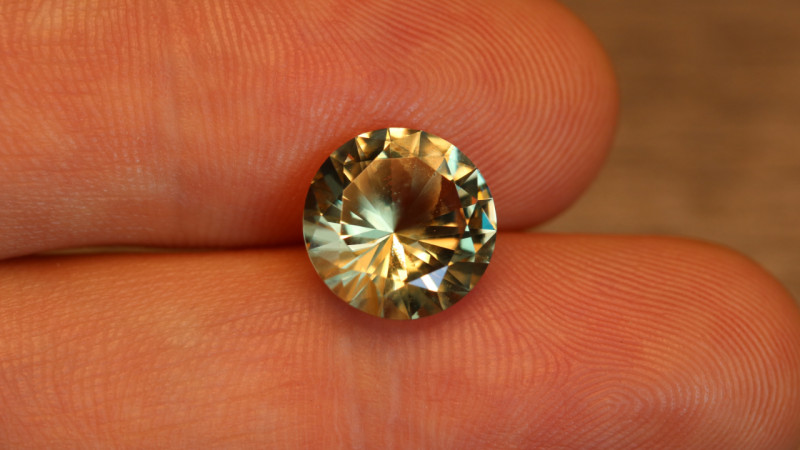
Diaspore Healing Properties
Like all crystals, diaspore’s energies and colors give it particular abilities as a healing stone. Many metaphysical diaspore uses are transformative, be it transforming your perspective or dealing with sudden life changes.
Like all pink gemstones, pink diaspore can encourage self-love, heal emotional scars, and provide nurturing reassurance.
What are diaspore’s metaphysical properties for physical, emotional, and chakra healing?
Physical Healing
Diaspore’s physical benefits may include improving memory and supporting the nervous system. It may reduce stress by helping lower blood pressure and heart rate.
Like many colorless gemstones, diaspore can bring focus and mental clarity, especially if you suffer brain fog from aging or stress.
Emotional Healing
Diaspore can help you adjust emotionally to new beginnings and transitions. Its color changes reflect its purported ability to change pessimistic perspectives into optimistic outlooks.
Additionally, diaspore may improve resilience and problem-solving. Crystal healers use the crystal to inspire creativity and enhance dream recall.
Chakra Healing
Chakra stones are tools used in energy healing to balance your chakras — energy centers tied to different aspects of your wellbeing. Diaspores are chakra stones for the third eye chakra.
The third eye chakra is on your forehead between your eyes and represents higher spiritual awareness. When blocked, you may doubt your intuition or feel dissatisfied with life.
When diaspore opens the chakra, you feel confident in your purpose, trust your intuition, and experience greater self-discovery.

Diaspore Gemstone Properties
Gemstone properties are the factors experts use for estimating a gem’s objective value. Color, cut, clarity, and carat weight play a role in diaspore’s value.
Color
Most diaspore colors come from impurities present during the stone’s formation. Chromium creates green, manganese creates pink and red, and iron creates green or brown hues.
The best color-changing diaspore has distinct, saturated colors. It’ll also have good contrast, appearing bright canary yellow in sunlight to deep raspberry red in candlelight. Lower-quality specimens will show muted tones like khaki green, straw yellow, gray, and brown.
Cut
Diaspore’s perfect cleavage and crystal structure make faceting tricky, so the expertise required for well-faceted stones increases their value. Plus, cut quality affects how good the color and color change looks.
Common faceted cuts for diaspore include cushion, rectangular, and octagon. Rare chatoyant diaspore (with a “cat’s eye”) will always become a cabochon.

Clarity
Clarity grades describe the presence of inclusions in a gem. Diaspore is Type II on the colored gemstone clarity scale, meaning it has small inclusions only visible with 10x-magnification.
Stones with heavy, visible inclusions will have a significantly lower value. The only exception is the fiber-like inclusions that create chatoyancy, as chatoyant diaspore is rare.
Carat Weight
Larger diaspore gems often have higher price-per-carat rates. You’ll only see good color changes in stones over 2 cts. Stones over 5 cts have the best color change, but that’s only about 3 percent of diaspores.
Any eye-clean diaspores (inclusion-free to the naked eye) over 7 carats are in the top 1 percent.
Synthetics
Synthetic color-change diaspore is typically man-made glass that’s yellow-green in fluorescent light and brownish-yellow in incandescent light. Manufacturers might use neodymium and praseodymium to cause a color change.
How can you tell if diaspore is real?
Synthetic, or fake diaspore is often suspiciously low in price. While virtually indistinguishable from natural stones, some hydrothermal synthetic diaspore will have “g/t” inscribed on its label. A common fake posing as Zultanite® that’s gaining traction on ebay appears to be off-white, feathery, and metallic.
The only surefire proof that diaspore is natural is a gemstone certification.
How does natural diaspore form?

Diaspore Formation & Sources
The most common formation method for diaspore is diagenesis.
Diagenesis starts when tropical environments weather alumino-silicate rocks, turning the silicate into clay. The clay reacts with water, eventually becoming bauxite. Most diaspore comes from bauxite deposits.
Another formation method is hydrothermal alteration. Aluminous rocks start in geothermal systems, where heat naturally transfers from the Earth’s crust to the surface. Hot fluids seep into permeable rocks, altering the rocks and creating new minerals like diaspore.
Mining Locations
As you know, Turkey is the prime source of diaspore gemstones. Afghanistan emerged in 2020, producing pleochroic diaspore with baby pink to lilac hues.
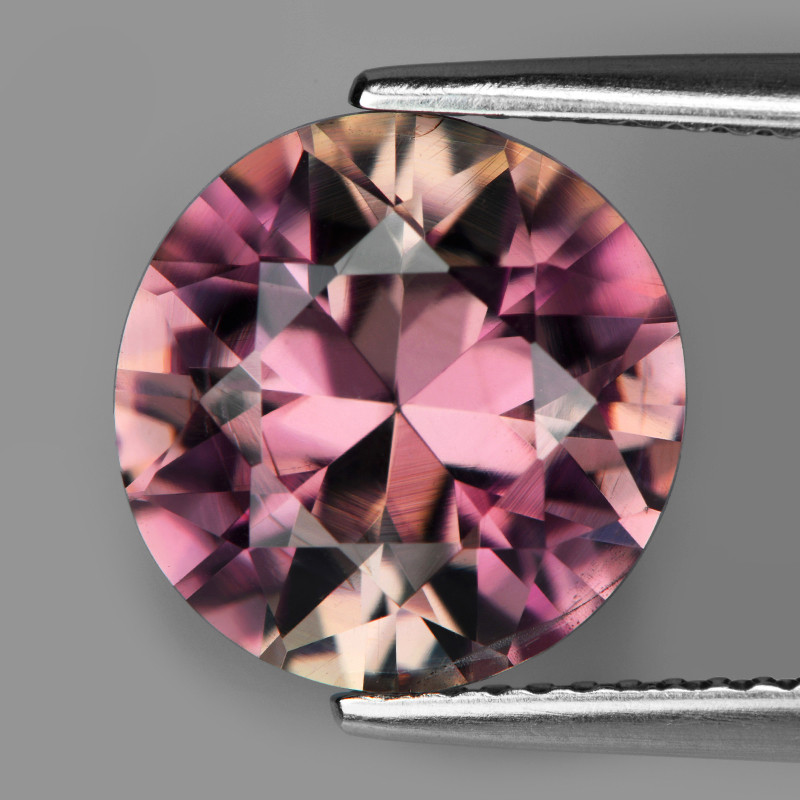 Image: pink diaspore from Afghanistan
Image: pink diaspore from Afghanistan
Besides Afghanistan and Turkey, where is diaspore found? We’ll list them below:
Argentina
Brazil
China
France
Germany
Greece
Greenland
Hungary
Japan
New Zealand
Norway
Russia
South Africa
Switzerland
Sweden
United Kingdom (England & Scotland)
USA (Pennsylvania, Arizona, Massachusetts)
It’s time to talk about price. Is diaspore expensive? High-quality gems like Zultanite® or Csarite® are pricey, but let’s break down the specifics.

Diaspore Price & Value
Faceted diaspore price per carat is $70-$900 for color-changing stones at wholesale. Diaspore gems without color-change are usually $6-$40 per carat, though pink-purple Afghanistan diaspores are $150-$300 per carat.
How much is Zultanite® per carat? Zultanite® changes in price-per-carat by carat weight but ranges overall from $500-$10,000 per carat at retail and $50-$3,000 per carat at wholesale.
How much is Csarite® worth? Calibrated Csarite® gems range from $30-$200 per carat when under 5 cts. Csarite® over 5 cts costs $500-$1,000 per carat.
The most affordable options are diaspore cabochons and rough specimens. Color-changing cabochons cost $2.50-$11 per carat at wholesale. The diaspore stone price for rough specimens is usually $3 per carat but can be $2-$20 per carat.
Diaspore Care and Maintenance
Proper gemstone care is crucial to preventing damage. The safest jewelry options are pendants and earrings, but you can still buy a diaspore ring — we just recommend a protective setting.
Clean diaspore gently with warm water and mild soap. Rinse it in lukewarm water and carefully pat it dry with a microfiber cloth.
Keep diaspore away from:
Extreme temperature changes
High heat
Ultrasonic and steam cleaners
Acids
Rough handling
Remove your diaspore jewelry before doing intense physical activity. Store it away from other gemstones.
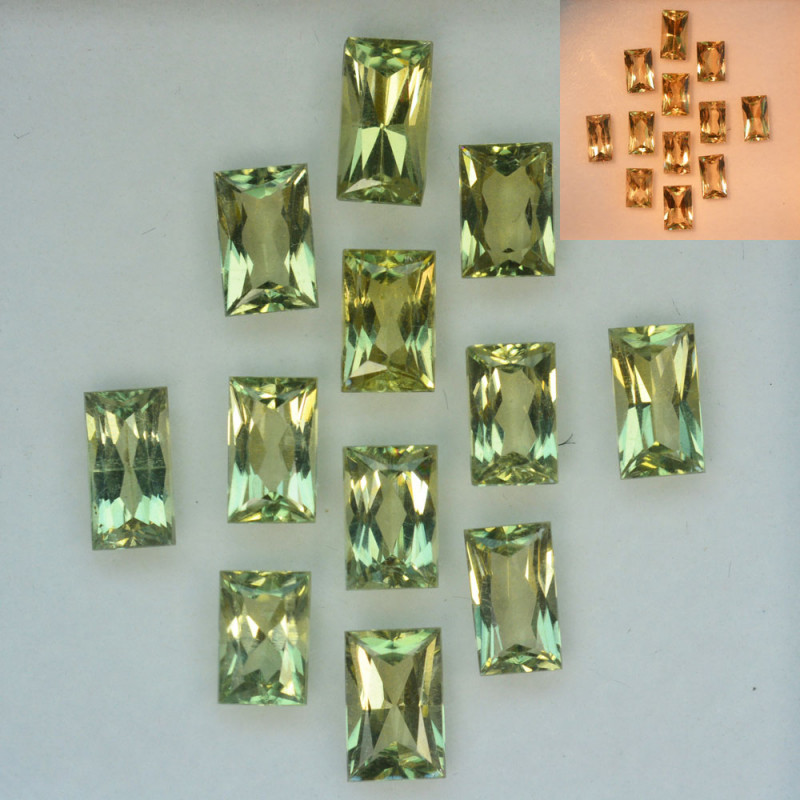
Ready to Soar with Diaspore?
Diaspore’s gorgeous color-changing effect and rich modern history make it a distinguished delight for any taste.
It may be a bit pricey, but its exclusivity means diaspore can be a great investment. Whether you choose Zultanite®, Csarite®, or even a non-color-changing diaspore, its transformative powers are sure to make an impact!
Search the Gemstone Encyclopedia
Related Auctions
Related Articles
Originally the Birthstones or gemstones were associated with a zodiac sign or the month of a individuals birth. Find out what your stone is and view the stones we have for sale
8th Feb 2021
There are dozens of quartz and chalcedony gems with various colors and patterns. Learn all about quartz properties and every type of quartz, from amethyst and agate to plasma and phantom quartz!
15th Oct 2020
Hackmanite is a pink to violet sodalite gem known for its unique color-change and luminescence. Learn why hackmanite is special, from its rare qualities to the types of hackmanite jewelry available.
28th Mar 2018
Latest Articles
Friedelite is an uncommon pink, red, or brown manganese silicate mineral best known from New Jersey and South Africa. Learn the prices, properties, uses, and history of friedelite gemstones.
23rd Dec 2024
Shortite is a rare mineral and rarer gemstone, usually found as colorless or yellow wedge-shaped crystals. Learn the value, history, and properties of shortite in this guide!
9th Dec 2024
Senarmontite is an uncommon antimony mineral mostly used industrially but occasionally collected as rare gems or pearly crystals. Find out all of the traits, uses, prices, and history of senarmontite.
27th Nov 2024
Article Categories
How To's is where you will find helpful articles from gem Rock Auctions on how to cut gemstones, select gemstones and buy gemstones.
9 Articles





